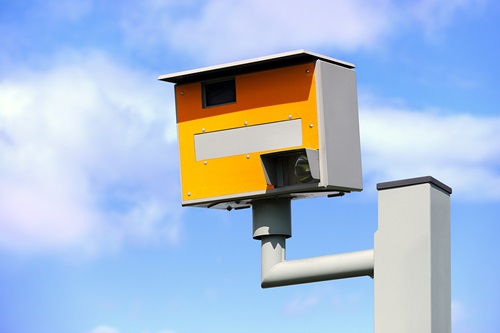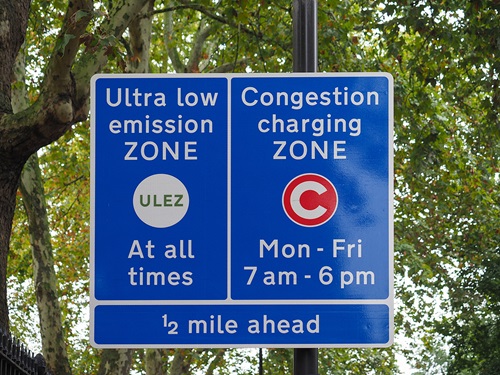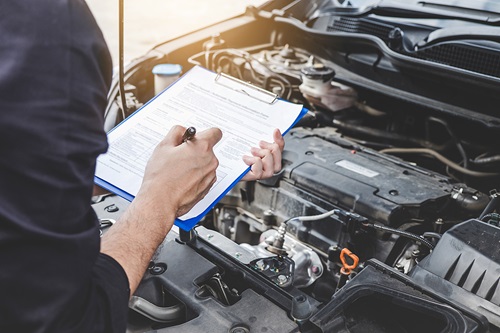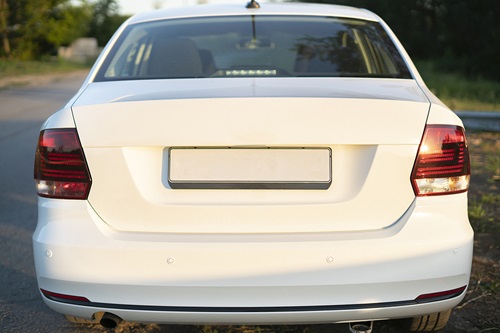A speeding fine for an offence you didn’t commit. A parking ticket from a car park you’ve never visited. Or have the police been in touch because they think you drove off without paying for fuel? If any of these sound familiar, your car has probably been cloned. It’s a crime that’s on the rise – here’s how to protect yourself from being the next victim.
Car cloning is a selfish and tiresome crime. You find yourself drawn into activity you weren’t involved in and are forced to spend time and effort proving that it’s not you that the police are looking for.

Often, motorists will discover their car has been cloned only when they start receiving summonses or notices of prosecution for non-payment of fines. Or worse still, visits from the police investigating a serious crime such as a robbery.
Others will fall victim to the cloners when they buy a used car in good faith and discover later that their new pride and joy isn’t the vehicle they thought it was. It’s a stolen car that belongs to someone else but has been made to look like a legitimate bargain.
What is car cloning?
It’s the practice of taking one car and making it look like another. That way, any offences a person might commit with a car, or any time the car is caught on an ANPR (automatic number plate recognition) camera, won’t be legitimately recorded because its details will show up as belonging to someone else – not the criminal driving around in it.

This is a crime that’s on the rise and the soaring cost of buying and running a car is thought to be the main reason behind the scam. High insurance premiums, an increase in road and bridge tolls, congestion charges, mounting fuel prices and a rise in ANPR cameras are all driving car crooks towards this selfish practice.
There are the ‘quick wins’ for criminals who clone cars and change their identity, including:
- Avoiding parking charges and/or fines
- Avoiding speed camera tickets
- Avoiding congestion charges
- Avoiding tolls controlled by traffic cameras
- Using cloned number plates on stolen or written-off cars to sell on
- Using cloned cars in robberies or ‘ram raids’
How bad is the problem?
Due to the nature of the crime it’s difficult to know exactly how many cloned vehicles there are on the UK’s roads. However, figures available from London’s authorities give some guide to the extent of the problem.
Thousands of fines issued by the capital city’s authorities, for non-payment of the ULEZ charge, have been cancelled and many of these are because the car’s owner has been able to prove that they were not driving in the capital on the day of the ‘offence’.
Transport for London (TfL) confirmed that more than 12,000 ULEZ fines were cancelled in 2022 after the owners of those cars were able to prove it had been cloned. For comparison, in the previous three years the figure ranged between 1,000 and 2,500.
Additionally, between 2,000 and 3,000 congestion charge fines were cancelled by the city authorities in each of the last five years since 2019.
How to avoid buying a cloned car
Price: The old saying ‘if something looks too good to be true, it probably is’ rings true here. Why would anyone sell a car at a rock-bottom bargain price if they didn’t have to? Check the average ‘book’ price of the car you’re considering and if it appears too cheap, be suspicious.
Money: Never pay cash for a second-hand car. There is no way of showing the authorities that you paid for the vehicle, nor who the seller was, if you don’t do the transaction through a bank account, credit card or other traceable means of payment.
Venue: Avoid buying a used vehicle in a public area such as a car park, petrol station or by the side of the road. Ask yourself ‘why is the seller not doing the deal from their house?’
Documents: Don’t buy a used car without seeing its V5C registration document (‘logbook’) which shows all its identity details and an owner’s address.
Maintenance: If the seller can’t show you any service history or receipts for repairs or MOT tests – which will also show a number plate – be very wary.
Inspect: Check thoroughly any documents that are produced, to see if they match with the car’s ‘story’ and perceived age. See that the VIN (vehicle identification number) in the car’s engine bay, door openings or on the windscreen, match that in the logbook.

Expert advice: If you’re not sure, get the vehicle inspected by a professional technician to see that everything matches up.
History check: A vehicle history check is well worth considering. MotorCheck’s £9.99 ‘Single Check’ will give you details of a vehicle’s true identity, whether it has been reported stolen, any mileage discrepancies, MOT history, number of previous keepers, and lots more information to help you make an informed decision.
Receipt: Insist on a proper receipt detailing the price paid, date of transaction and address of the seller. These details could turn out to be false of course, but at least you’ll have a date of purchase and some sort of paperwork to show the authorities.
How to avoid being cloned

Photos: If you publish pictures of your car on-line or on social media sites with the number plate showing, you are giving crooks a head start in their search for suitable vehicles to copy.
Garage: Put your car away at night, preferably in a garage. Or at least try to park it out of sight.
Number plates: You can buy theft resistant plates that break if someone tries to remove them, or tamper-proof screws to hold plates safely in place.
What to do if your car has been cloned
If you return to your car one day and the number plates have been removed it’s highly likely that someone is going to steal your car’s identity for criminal activity. Tell the police straight away.
You’ll have to do the same if you start to receive parking ticket notices, demands for unpaid charges or claims for road tolls in areas you have never been to. This could start happening with alarming regularity, so the sooner the authorities know you have been cloned, the better.
Find any proof you can that you were somewhere else on the days that ‘offences’ were committed, such as photos of your car elsewhere or legitimate parking tickets (receipts), to show the police. If you get a crime reference number from the police, pass it on to the DVLA licensing authority – they work together to fight this crime.
